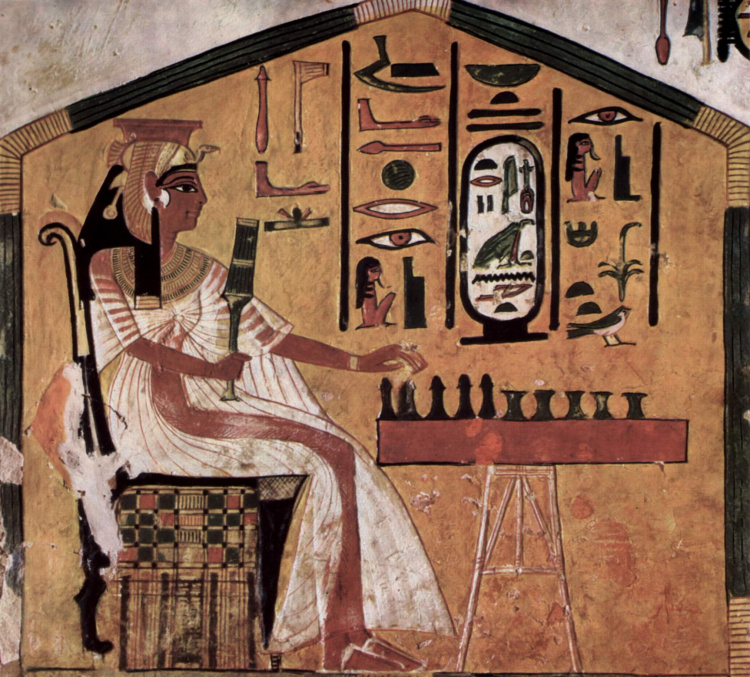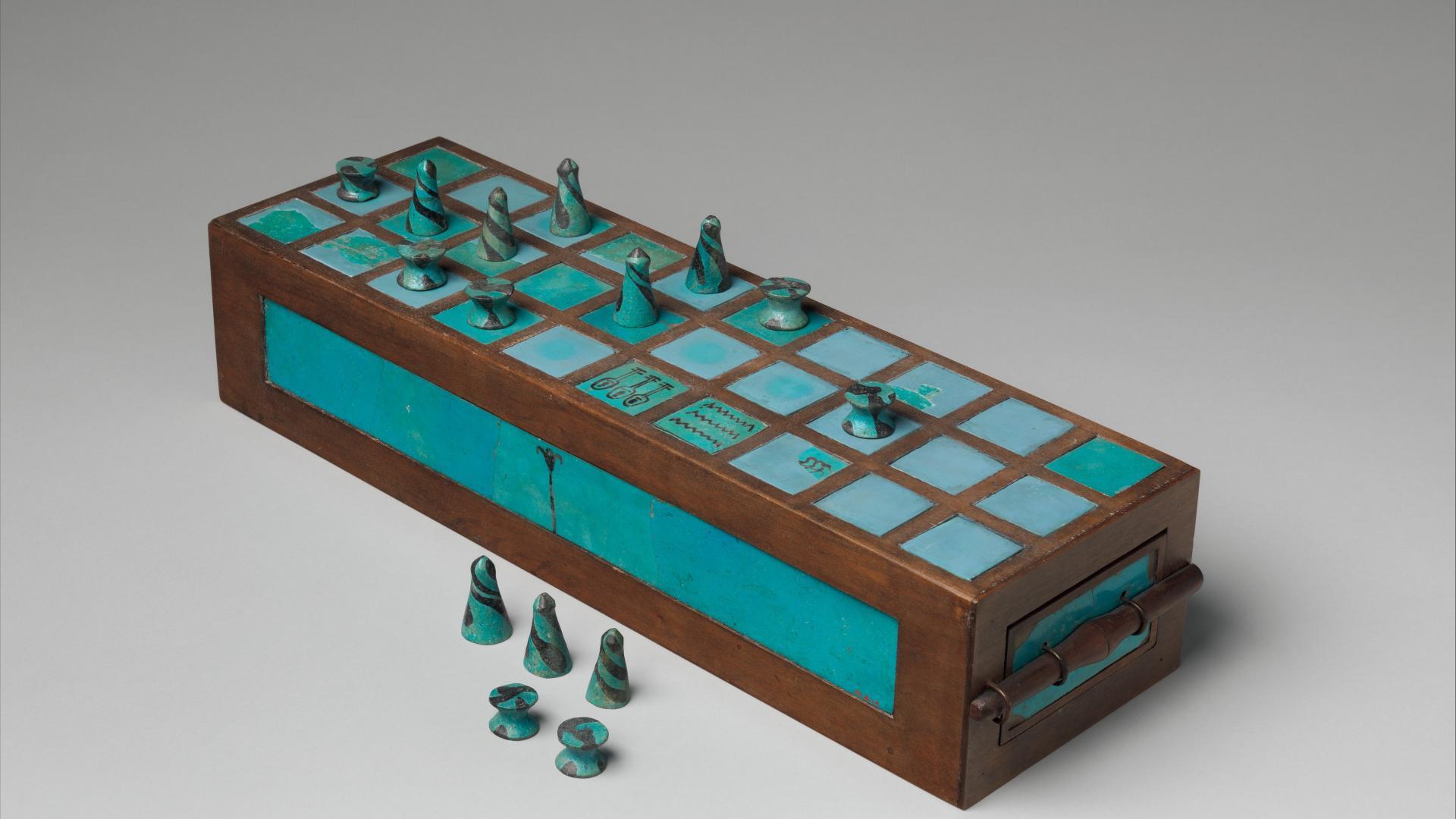Black History Month 2022-Day 18: Queen Nefertari & Senet
Chess enthusiasts around the world have enjoyed the game for centuries and are familiar with its Indian origins. However, there are alternate theories of how chess was spread. Some have suggested that chess played today descended from Africa. I have heard this suggestion made by chess enthusiasts based on a particular image of Queen Nefertari. Let us explore the subject. Was Senet the forerunner of chess? The short answer is NO.

This image is also featured on The Chess Drum when discussing the origins of chess. Interestingly enough, when I visited the Egyptian Museum of Antiquities near Cairo, I saw what I believed was an ancient chess set on display. Years later, it would become clear that the game was actually “Senet.” The second time I saw Senet was at the opening of the World Chess Hall of Fame in Miami, Florida. It was quite a joy to see the display in the museum!

Exhibit at U.S. Chess Hall of Fame on the ancient Egyptian game, senet
Copyright © 2001, Daaim Shabazz
Nefertari was said to be Nubian from the ancient land of Kush. She was married to Rameses II, a king and military strategist. Without getting into the entire history of ancient Egypt (Kemet), it would be accurate to say that they were a “power couple.” Nefertari was a charming woman who was highly educated and served as a diplomat to negotiate peace treaties on behalf of Nubia (Kush).
What about Senet?

The Otago Museum in New Zealand gives this description:
The first definite appearance of this game comes from the Third Dynasty (c. 2670 –2613 BCE) and the earliest boards we have come from the Middle Kingdom (c.2000 –1600 BCE). This game was played and enjoyed by commoners and nobles alike, the only difference being the materials used to make the boards and pieces. King Tutankhamun was buried with four senet boards made of precious materials, like ebony wood, and ivory, but less expensive boards were made of a pottery-like material called faience, orstone or simply scratched in dirt.
Looking at this set, it does resemble chess with a geometric board and ceramic figurines. In the instructions, each player has five pieces (“cones” or “spools”) and they make use of dice in an effort to get from the 1st square to the 30th square.

There are all types of pitfalls in the process. For example, some squares require a certain number on the die before the piece can move further. If you land on some squares, you can be sent to another square further back. Some squares are safe squares, meaning that you cannot be captured if you occupy it.

It is a game that resembles backgammon more than modern-day chess. The rules of play were not preserved, but many historians have reconstructed their own versions from snippets of literature. It also appears that the game had evolved through the different dynastic periods. That being said, this board game appears to have no relation to chaturanga, shatranj or modern-day chess.
The African connection to chess comes through the Moors bringing shatranj into present-day Spain. Regardless of whether we agree that Senet is a forerunner of chess, there were many strategy games throughout Africa. While at the World Expo in Dubai, I saw unique board games from Mauritania that appeared nothing like the chess I know, yet they were called “chess.” Perhaps the term is used generically for many games of strategy. That being said, we want to honor Queen Nefertari and King Rameses II for creating the environment for one of the oldest boards in history.
Otago Museum (rules): https://www.otagomuseum.nz/athome/how-to-play-senet

Queen Nefertari exhibit at the Nelson-Atkins Museum of Art in Kansas City Missouri. This montage was put together by “Laughing Griffin Crafting”.